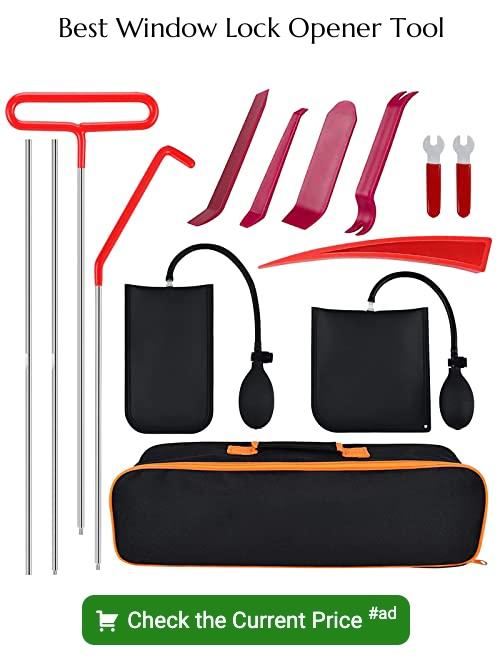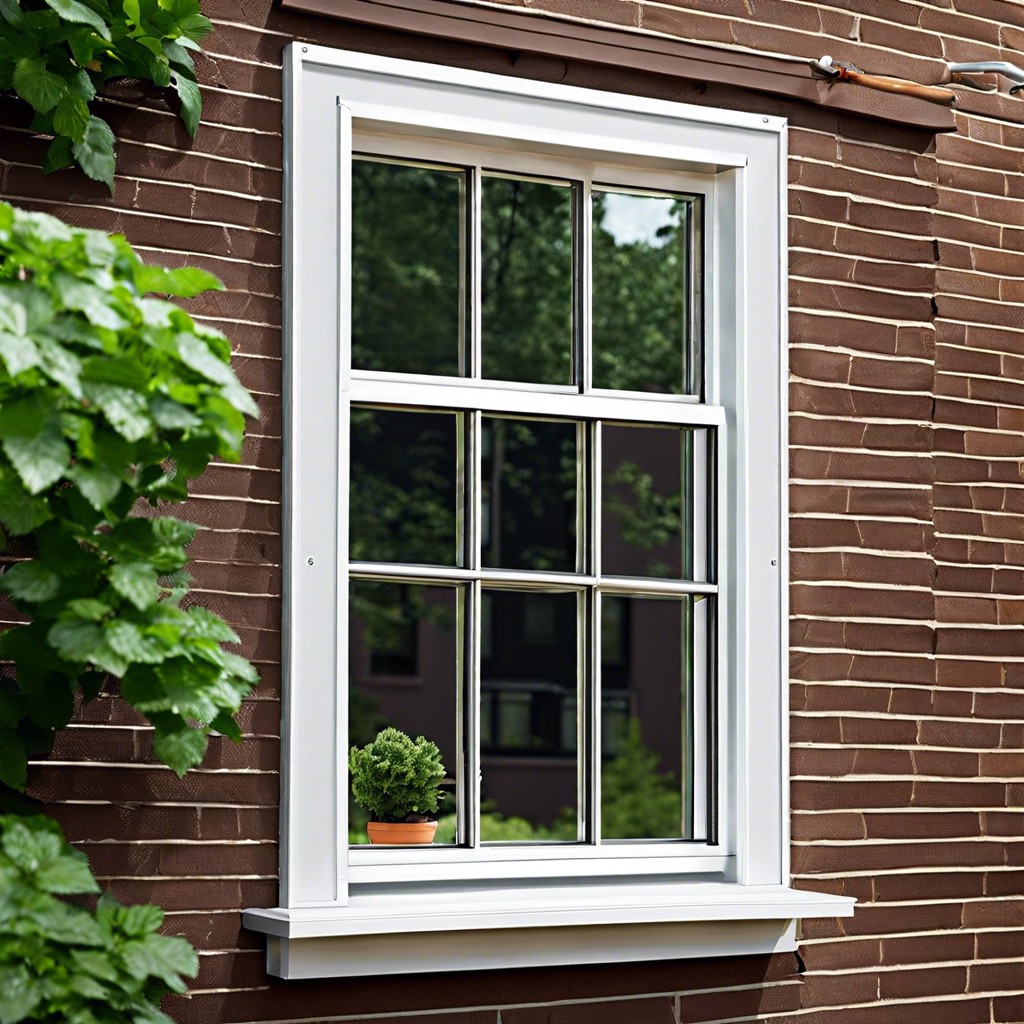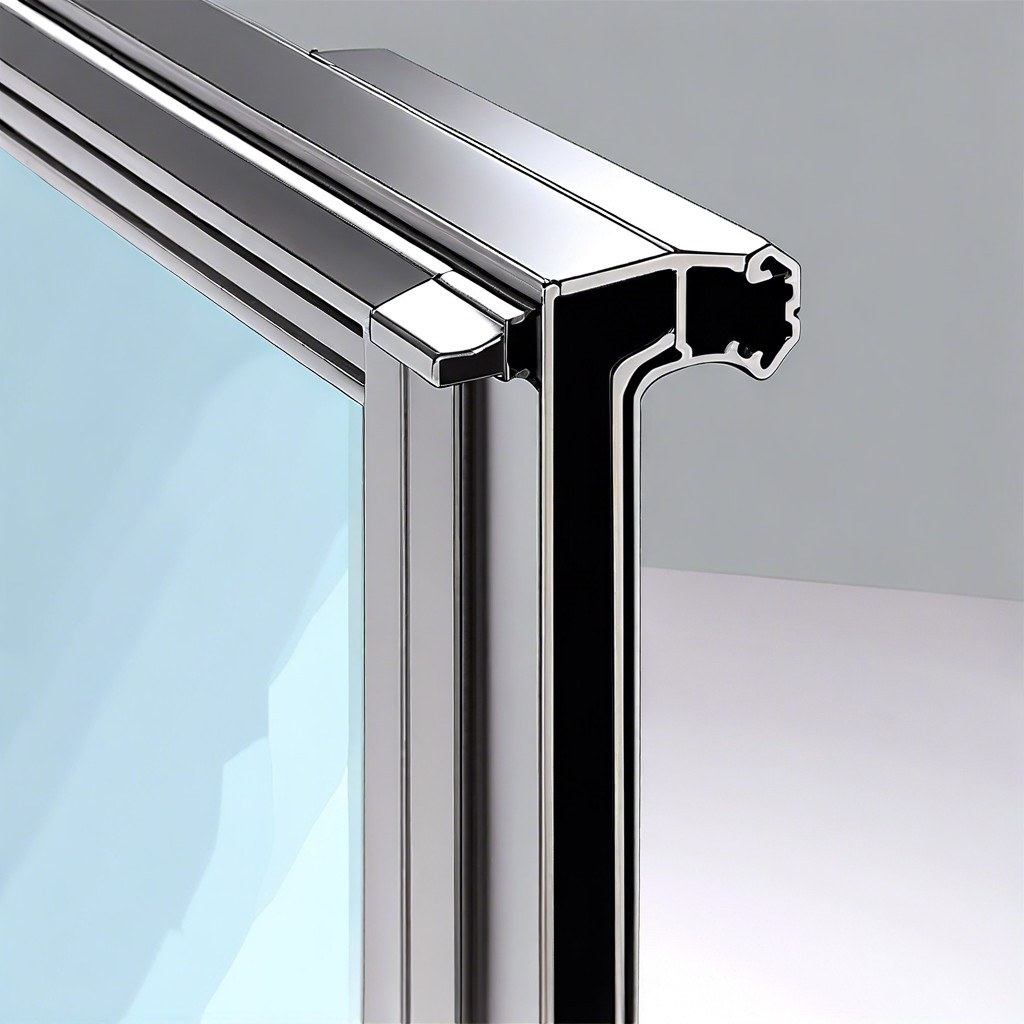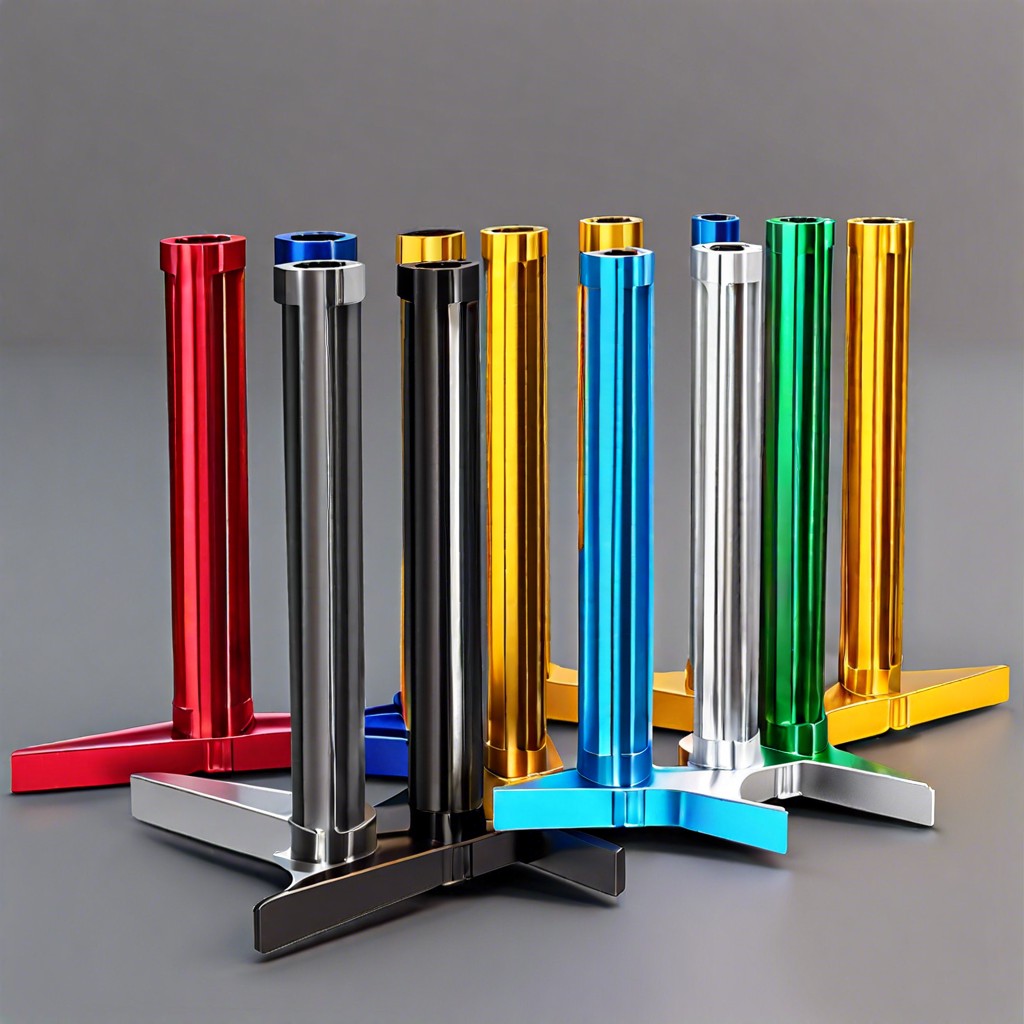Discover the simple process of unlocking and opening a window to let fresh air in by following these straightforward steps.
Windows are an essential part of any home, providing natural light, fresh air, and a view of the outside world. But what happens when you can’t open your window because of a stubborn lock? It can be frustrating to say the least.
However, fear not! In this blog post, we’ll walk you through the steps on how to open a window lock with ease. Whether you’re dealing with an old-fashioned latch or a modern locking mechanism, we’ve got you covered.
So let’s get started and unlock those windows!
Key takeaways:
- Different types of windows have different locking mechanisms.
- Common types of window locks include sash locks, sliding window locks, casement window locks, mortise locks, and thumbturn locks.
- Before opening a window lock, clear away any obstructions and inspect the lock for damage or wear and tear.
- The tools needed to open a window lock vary depending on the type of lock.
- To open a window lock, follow specific steps depending on the type of lock, such as using a key, turning a latch counterclockwise, or releasing a lever.
Identifying Window Lock Types
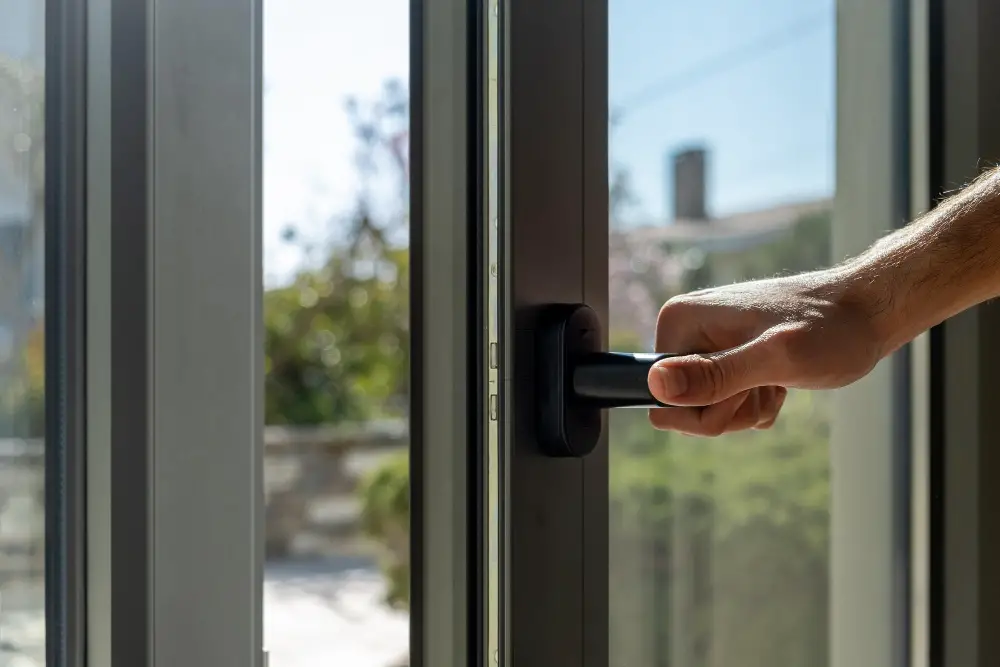
Different types of windows have different locking mechanisms, and understanding them is crucial for unlocking them correctly.
The most common types of window locks include sash locks, sliding window locks, casement window locks, mortise locks and thumbturns. Sash windows typically have two sashes that slide up or down past each other; they usually come with either a latch or a key-operated lock located on the meeting rail where both sashes meet.
Sliding windows are another popular type that slides horizontally along tracks in their frame; these often feature simple latches or keyed locking mechanisms. Casement windows open outwards like doors and use various kinds of latches to keep them closed securely.
Mortise Locks are commonly found in older homes as they were used before modern-day technology was invented. They require special tools to unlock because they sit inside an opening cut into the door frame itself rather than being mounted onto its surface like other types do.
Thumbturn Locks work by turning a knob on one side which releases pressure from springs holding pins against tumblers within cylinders – this allows rotation without resistance until all pins align at once allowing full movement again!
Types of Window Locks
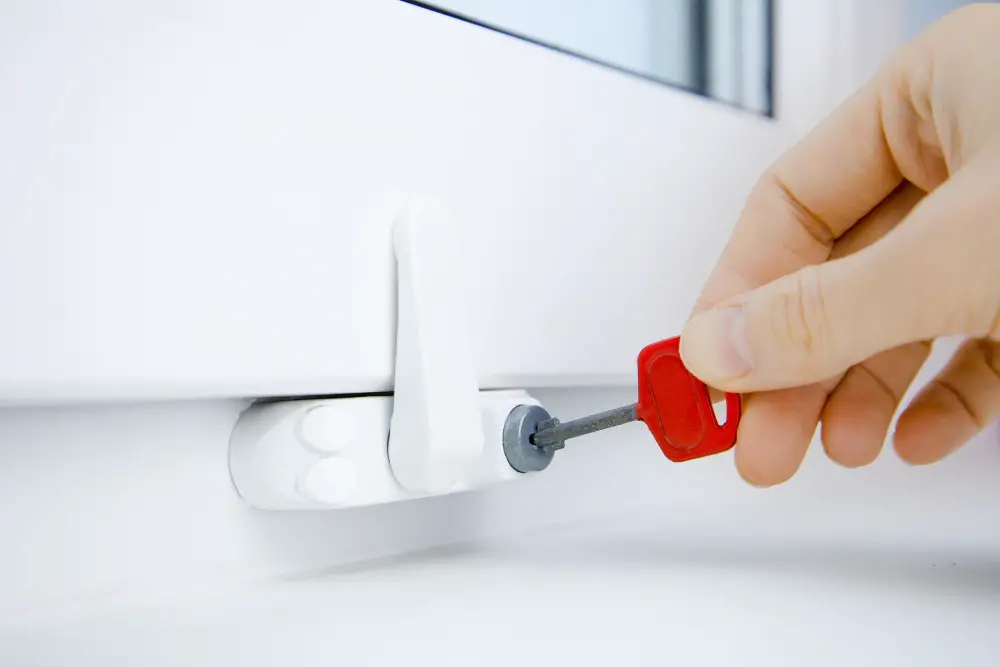
There are various types of window locks available in the market, each with its unique mechanism and level of security. Some common types include sash locks, sliding window locks, casement window locks, mortise locks and folding or crank handle windows.
Sash Locks: These are commonly found on double-hung windows that slide up and down vertically. They usually consist of a latch attached to one sash that slides into a strike plate on the other sash.
Sliding Window Locks: These come in different forms such as pin-style or keyed style locking mechanisms for horizontal sliding windows.
Casement Window Locks: Casement windows open outwards like doors; hence they require special locking mechanisms such as cam-action or hook-shaped latches mounted onto their frames.
Mortise Locks: Mortise lock systems involve installing a box-like structure inside your door frame where you can insert your key to unlock them from outside while using knobs/levers from inside for opening/closing purposes.
Folding/Crank Handle Windows – Folding/crank handle styles use an arm mechanism operated by turning a crank handle which is then locked into place when closed securely against its frame.
Preparing for Window Lock Opening
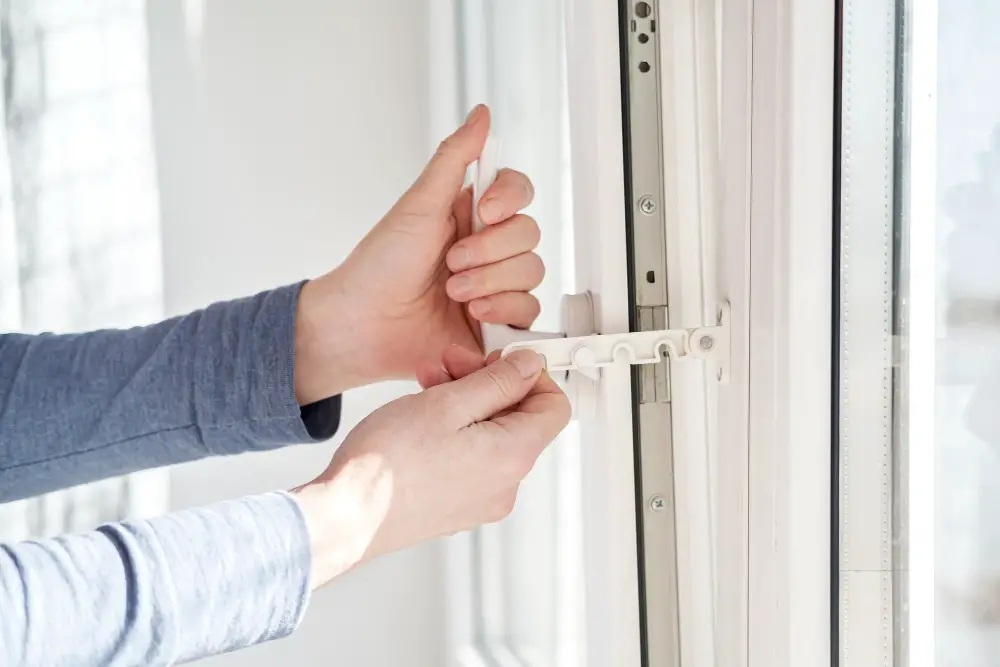
First, ensure that you have permission from the homeowner or landlord before tampering with any locks. Next, clear away any obstructions around the window such as furniture or curtains that may get in your way during the process.
It’s also essential to inspect both sides of the window for damage or wear and tear on its locking mechanism. If there are signs of damage, it may be best to call a professional locksmith for assistance.
Lastly, gather all necessary tools needed for opening your specific type of lock. This can include screwdrivers (both flathead and Phillips), pliers, lubricant spray (such as WD-40), keys if applicable and anything else recommended by manufacturers’ instructions.
Inspecting the Lock
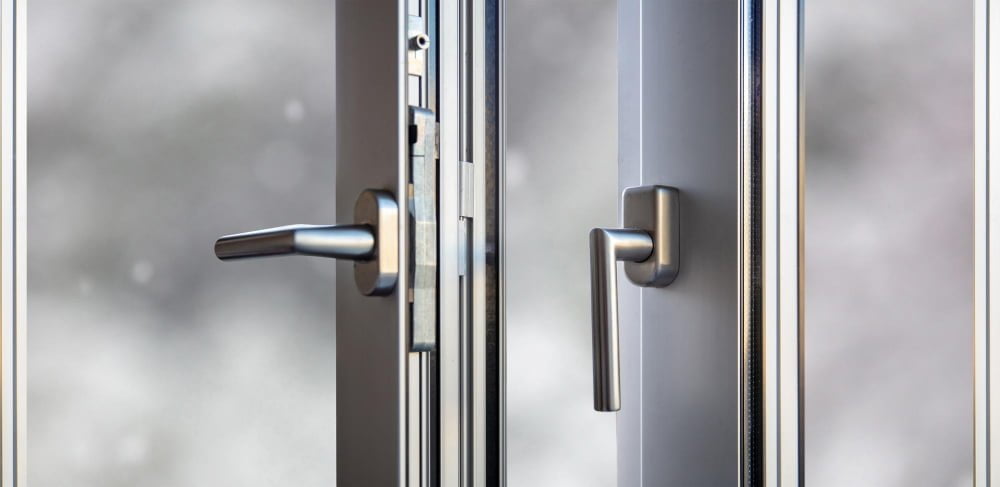
This step is crucial because it helps you identify any potential issues that may arise during the unlocking process. Start by examining the locking mechanism and checking for any visible damage or wear and tear.
If you notice anything unusual, such as rust or corrosion on metal parts, this could indicate that your window has been exposed to moisture over time.
Next, check if there are any obstructions in the way of opening your window fully. Sometimes dirt or debris can accumulate around locks making them difficult to operate correctly.
Ensure that all screws holding together different components of your locking system are tight enough but not too tight so they don’t strip out when unscrewing them later on.
Gathering Necessary Tools
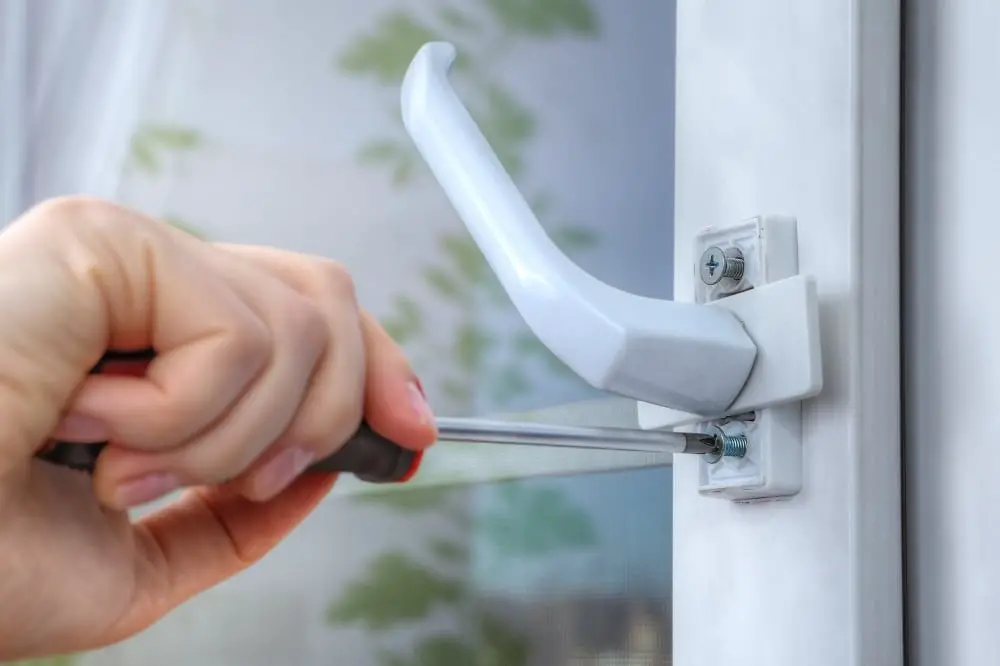
Having the right tools on hand will make the process much easier and prevent any damage to your windows or locks. The type of tool you need depends on what kind of window lock you have.
For a keyed window lock, ensure that you have a key that fits into the keyhole correctly. If there is no available key, consider contacting a locksmith for assistance.
For sash windows with latches or sliding bolts, use pliers or an adjustable wrench to turn them counterclockwise until they release.
If dealing with casement windows with lever handles and mortise locks, use a screwdriver to remove screws from around the handle before removing it entirely from its base plate.
Folding and swivel locking mechanisms require only basic household items such as butter knives or flathead screwdrivers for unlocking purposes.
Combination locks may require specific instructions provided by manufacturers; therefore check their website beforehand if possible.
Opening a Keyed Window Lock
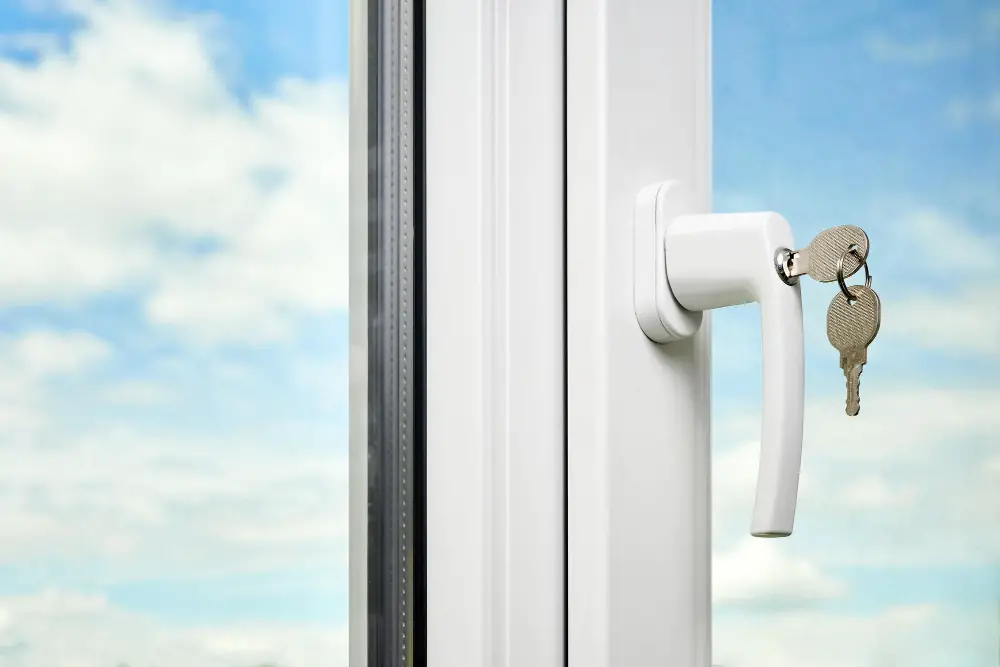
They are easy to use and provide an added layer of security to your home. To open a keyed window lock, you will need the key that matches the lock.
Firstly, insert the key into the lock and turn it clockwise until you hear a click sound. This indicates that you have successfully unlocked your window.
Next, locate any additional locking mechanisms on your windows such as latches or bolts which may be preventing it from opening fully. Release these mechanisms by turning them in their respective directions or pressing down on them depending on their type.
Gently push up or pull down (depending on whether it’s an upward-opening or downward-opening sash) while holding onto both sides of your windowsill until they slide open smoothly without resistance.
Opening a Sash Window Lock

They have two sashes that slide up and down to open and close the window. If you’re dealing with a sash window lock, here’s what you need to do:
1. Locate the lock: The first step is to locate where the lock is on your sash window.
2. Inspect the lock: Check if there are any visible signs of damage or wear on it.
3. Gather necessary tools: You will need a flathead screwdriver for this task.
4. Unlocking process: Insert your screwdriver into the slot located at one end of the latch, then turn it counterclockwise until you hear an audible click sound indicating that it has unlocked.
5. Opening process: Once unlocked, push up or pull down on either side of your sashes depending upon how they operate (single hung vs double hung) while holding onto both sides firmly so as not to break anything during operation!
Unlocking Sash Windows
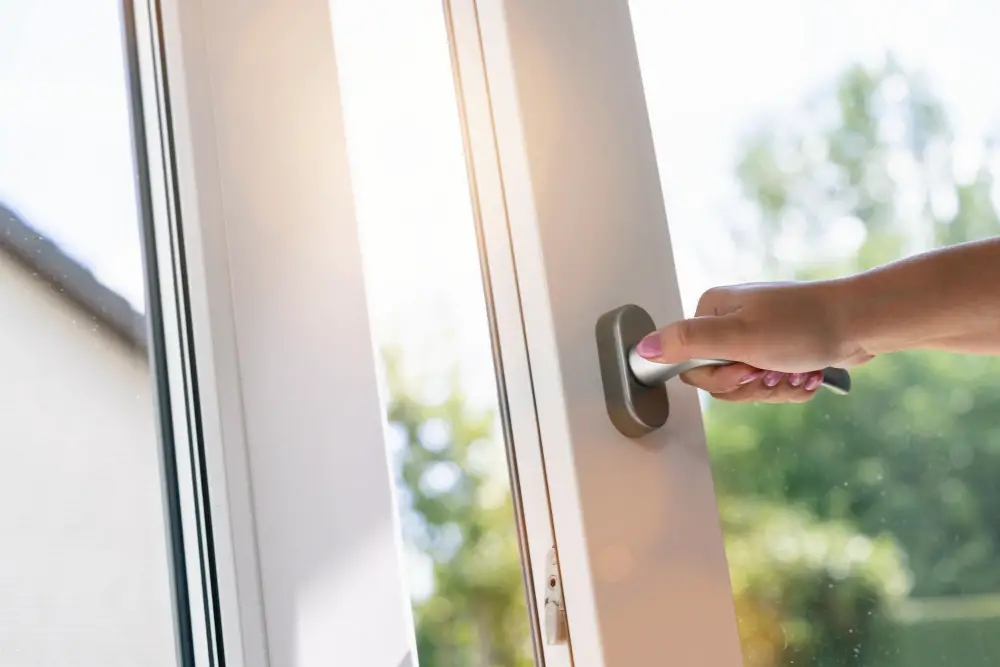
To unlock sash windows, start by locating the lock on your window. Most sash locks are located on the bottom rail of one of the sashes and can be easily identified by their shape.
Once you’ve found your lock, use a flathead screwdriver or another thin tool to push up on the latch while simultaneously pulling down on the lower sash. This should release any pressure that’s holding it in place and allow you to slide it open.
If your window has two locks (one at each end), repeat this process for both latches before attempting to open either side of your window fully.
Opening a Sliding Window Lock
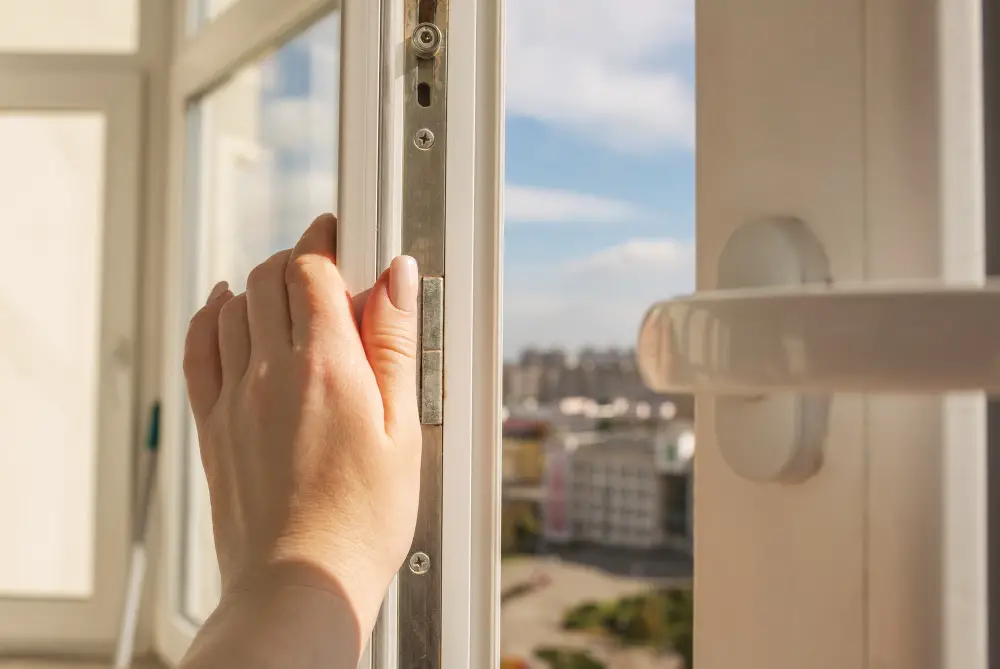
The locking mechanism can sometimes be tricky to open. To unlock a sliding window lock, start by locating the latch or lock on the side of the window that doesn’t move.
This is usually located at either end of the track.
Next, use your fingers or pliers to grip and lift up on this latch while simultaneously pulling gently towards you on that same side of your sliding window frame until it releases from its locked position.
If you’re still having trouble opening your sliding window after trying these steps, don’t force it! It’s possible there may be another issue with your locking mechanism that requires professional attention.
Opening a Casement Window Lock
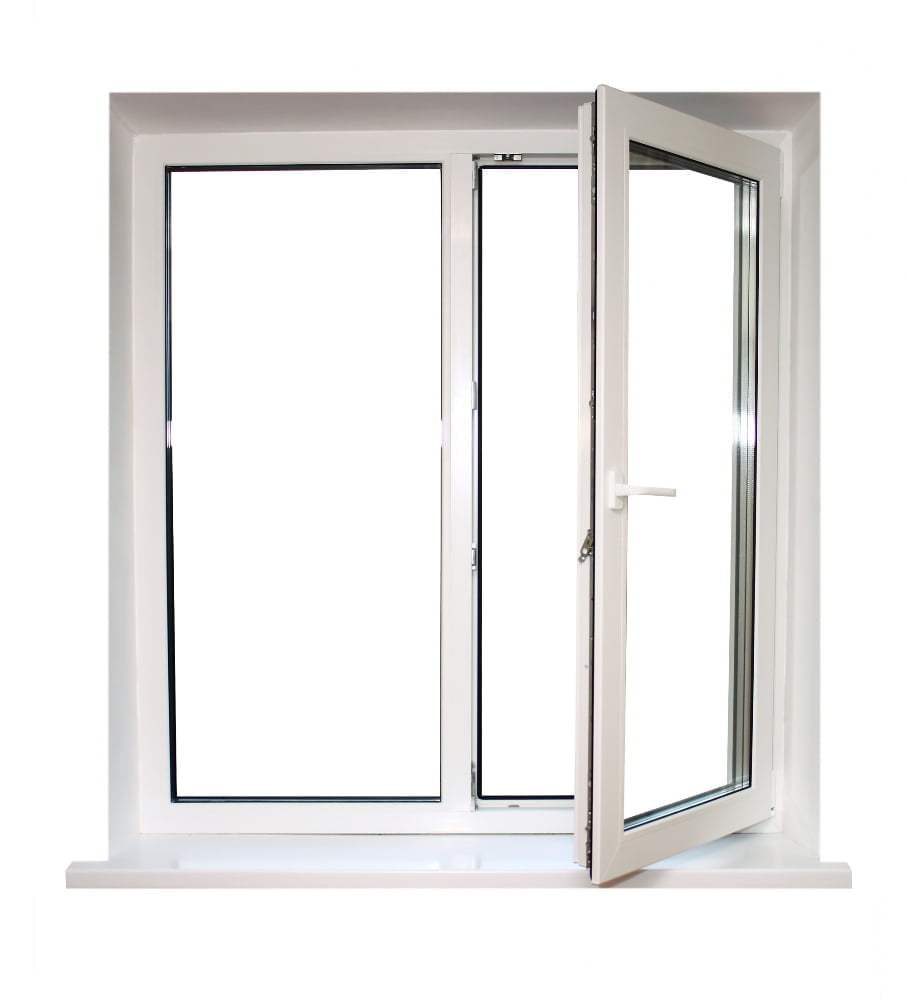
If you’re dealing with a casement window lock that won’t budge, it can be frustrating. Here’s how to open a casement window lock:
1. Locate the locking mechanism: The first step is to locate the locking mechanism on your casement window.
2. Inspect the lock: Check whether there is any visible damage or debris in the way of opening it.
3. Gather necessary tools: You may need pliers or other tools depending on what type of locking system you have.
4. Turn handle counterclockwise: If your casement window has a lever-style handle, turn it counterclockwise until you hear an audible click indicating that the latch has been released.
5. Turn key clockwise/counter-clockwise (if applicable): For keyed locks, insert and turn key either clockwise or counter-clockwise depending on which direction unlocks your specific model.
6. Push/pull sash inward/outward: Once unlocked push/pull sash inward/outward as needed while holding onto both sides until fully opened.
Opening a Mortise Window Lock
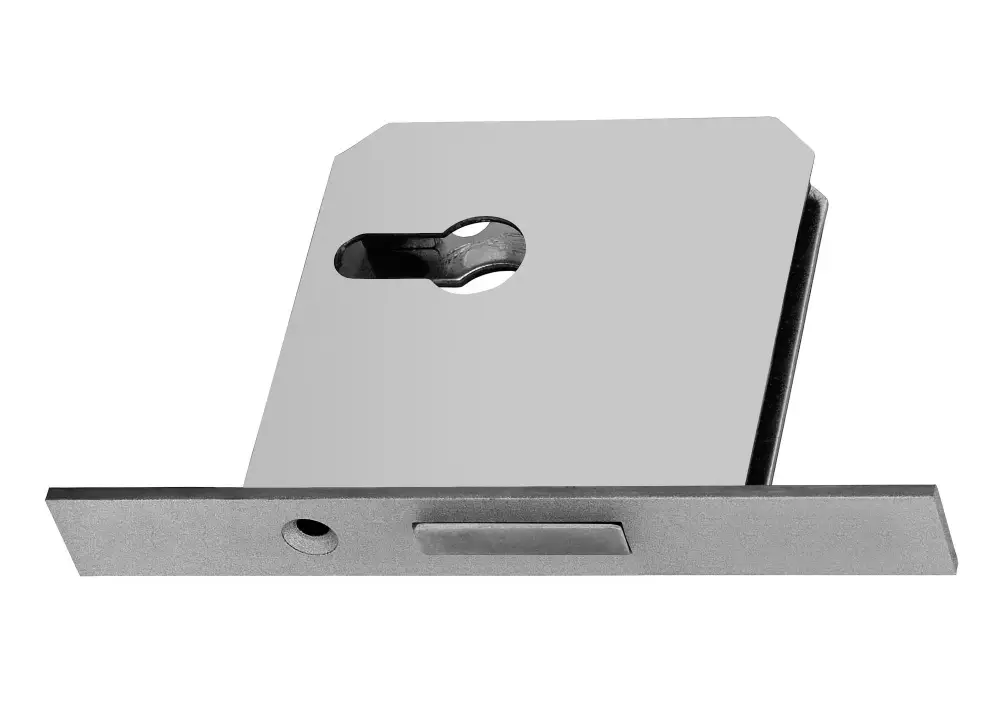
They consist of a rectangular box that is recessed into the frame of the window, with a metal plate attached to the sash. To open this type of lock, you will need to locate and turn the key in order to release it.
Firstly, inspect your mortise lock for any visible damage or debris that may be preventing it from opening properly. If everything looks good, insert your key into the lock and turn it counterclockwise until you hear a click sound indicating that it has been released.
Next step is pushing down on either side of your sash while pulling towards yourself gently until you feel resistance from its hinges; then continue pushing downwards while simultaneously pulling outwards again slowly but firmly until both sides come free from their respective frames – now enjoy fresh air flowing through!
Opening a Folding Window Lock
They offer an excellent way to maximize natural light and ventilation while maintaining security. However, folding window locks can be tricky to open if you’re not familiar with them.
To unlock a folding window lock, start by locating the locking mechanism on the frame of your window. The lock is usually located at the bottom or top of one side of the frame.
Next, use your fingers or pliers to turn and release any locking pins that may be holding down each panel’s handlebar. Once all handles are released from their respective panels’ edges, gently push each panel towards its opposite end until they meet in the middle.
Locate any additional latches that may secure both panels together when closed and release them before pushing outwards on either side until fully opened.
Opening a Window Bolt Lock
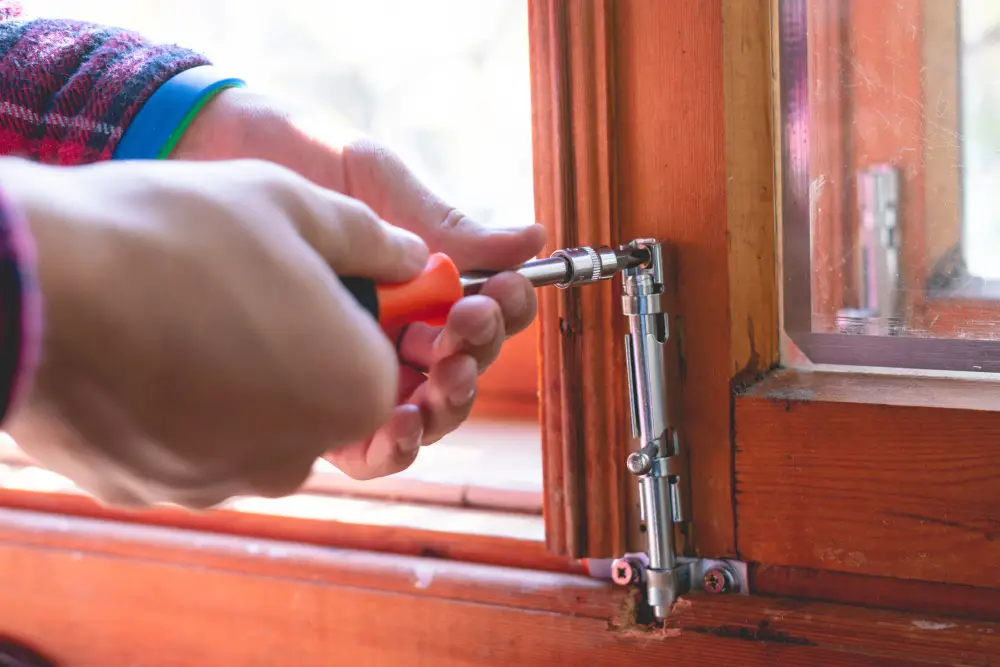
To unlock this type of window lock, start by locating the bolt on the inside of the window frame. The bolt is typically located near the bottom or top corner of one side of the frame.
Next, use a flathead screwdriver or similar tool to turn and release the latch that holds down the bolt. You may need to apply some pressure while turning it counterclockwise until you hear a click sound indicating that it has released.
Once you’ve unlocked your window’s bolts, slide it open carefully without forcing anything out of place. If there’s any resistance when opening your window after unlocking its bolts, check for any debris in its tracks before trying again.
Opening a Thumbturn Lock
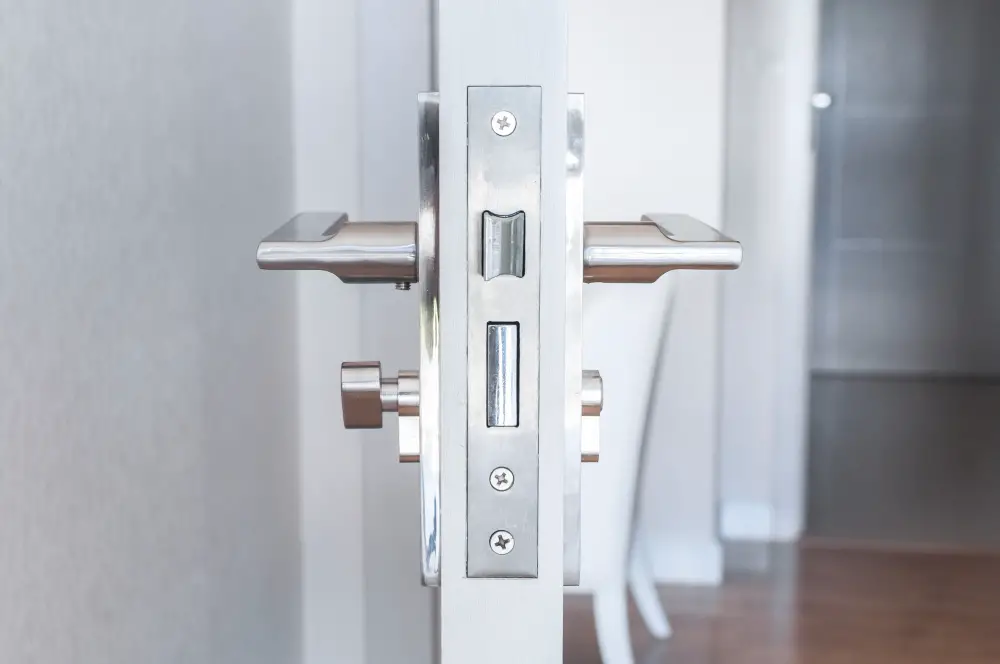
They are easy to operate, as they do not require a key. Instead, you can simply turn the thumb lever to unlock or lock the window.
To open a thumbturn lock, start by locating the thumb lever on your window frame. It is usually located near the bottom of one of the sashes or along one side of a sliding window.
Next, use your fingers to grip and turn the thumb lever counterclockwise until it stops moving. This will unlock your window.
Gently push up on either side of your double-hung sash or slide it open if you have a sliding window. If you encounter any resistance while turning or opening your thumbturn lock, stop immediately and inspect for any obstructions that may be preventing proper operation before trying again.
Opening a Swivel Window Lock
They consist of a lever that swivels to lock or unlock the window. To open this type of lock, start by locating the lever on your window frame.
Once you have located it, turn it counterclockwise until you hear a click sound indicating that the lock has been released.
If your swivel window is stuck and won’t budge, try applying some lubricant to loosen up any rust or debris that may be causing resistance. You can use WD-40 or any other household oil-based lubricant for this purpose.
In case there’s no visible locking mechanism on your swivel windows but they still won’t open, check if there’s an additional latch somewhere else along with its frame as some models come with two latches instead of one.
Opening a Swivel Window Lock is relatively easy once you know where to find the locking mechanism and how to operate it correctly.
Opening a Combination Window Lock
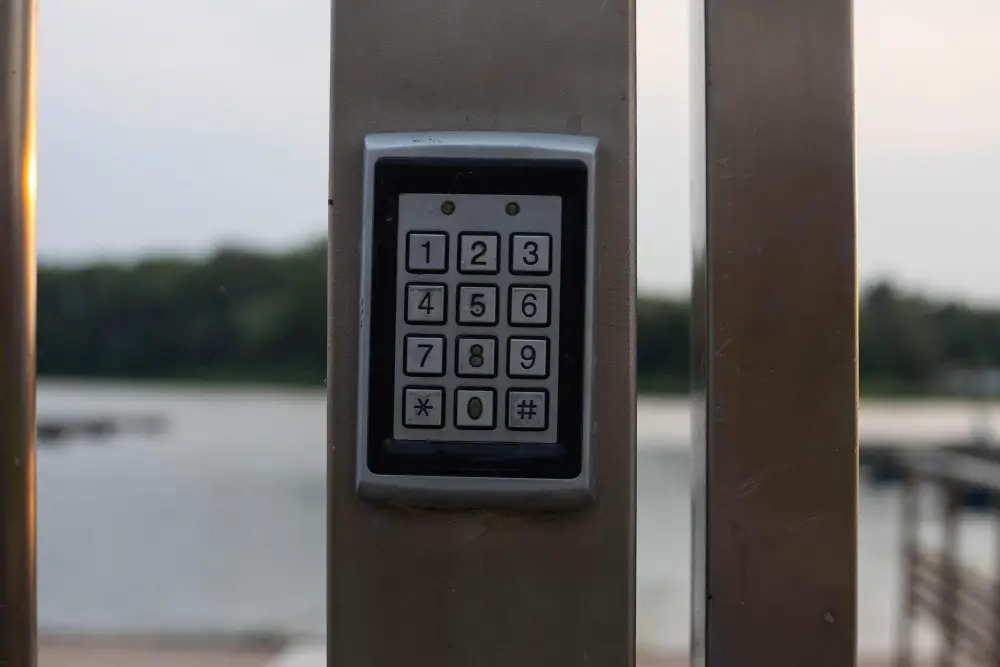
They offer an added layer of security and convenience, as they don’t require keys to open or close the windows. Instead, you need to enter a specific combination code on the lock’s keypad.
To open a combination window lock, start by identifying the type of lock you have and locating its keypad. Once you’ve found it, enter your unique code using the numbered buttons on the pad.
If your code is correct, you should hear a click sound indicating that the lock has been disengaged. You can then proceed to slide or push open your window as usual.
It’s important to note that if you forget your combination code or accidentally input it incorrectly too many times in succession (usually three), some models may go into “lockout” mode for several minutes before allowing another attempt at entry.
In such cases where access is denied due to incorrect codes being entered repeatedly without success; contacting professional help would be necessary for unlocking and resetting purposes.
Troubleshooting Window Lock Issues
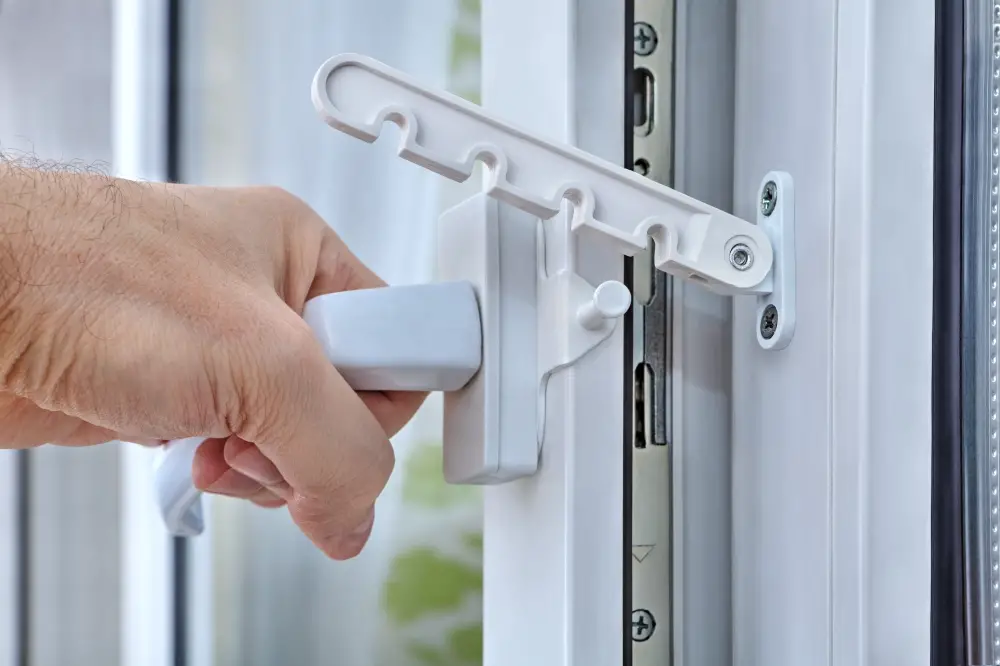
If you’re having trouble opening your window lock after following the steps outlined in this post, don’t worry! There are a few things you can do to troubleshoot the issue.
Firstly, check if there is any debris or dirt lodged in the locking mechanism. This could be preventing it from functioning correctly and may require cleaning with a soft brush or compressed air.
If that doesn’t work and your lock is still jammed shut, try lubricating it with some graphite powder or silicone spray. These products will help loosen up any rusted parts of the mechanism and make it easier to turn.
In some cases where damage has occurred due to wear-and-tear over time or attempted break-ins by intruders; professional assistance might be necessary for repair works on damaged locks. Remember that safety should always come first when dealing with windows – never force them open if they won’t budge as this could cause further damage both to yourself and your property.
Addressing Jammed Locks

If you find yourself in this situation, don’t panic! There are several things you can try before calling in a professional.
Firstly, check if there is any debris or dirt stuck inside the lock mechanism that could be preventing it from turning. Use a small brush or compressed air to clean out the area around the lock and see if that helps.
If cleaning doesn’t work, try lubricating the keyhole with graphite powder or silicone spray lubricant. This will help loosen up any rusted parts and make it easier for you to turn the key.
Another option is to use pliers or vice grips on either side of the locking mechanism while trying to turn it with your key. Be careful not to apply too much pressure as this could damage both your window frame and locking system.
If none of these methods work for you then consider seeking professional assistance from an experienced locksmith who can diagnose and fix more complex issues with ease.
Professional Help for Window Locks

A locksmith or a window repair specialist will have the necessary tools and expertise to diagnose and fix any issues with your locks. They can also provide advice on how to maintain your windows properly, so they continue functioning smoothly for years to come.
When choosing a professional, make sure they are licensed and insured. You should also ask for references from previous clients before hiring them.
It’s essential that you feel comfortable with whoever is working on your home.
Opening a window lock doesn’t have to be complicated if you follow these simple steps carefully. However, if you’re unsure about anything or encounter any problems along the way – don’t hesitate! Seek help from professionals who specialize in repairing windows locks as soon as possible before things get worse!
FAQ
How do you open a locked screen window?
To open a locked screen window, press and hold Ctrl + Alt, then press and release Delete, and finally release the keys on the Windows 10 login screen.
How do you open a locked horizontal sliding window?
To open a locked horizontal sliding window, carefully slip a pry bar between the window ledge or windowsill and the window panel, gently shake it, and then pull the panel backward.
What are the steps to unlock a double-hung window?
To unlock a double-hung window, raise the lower sash slightly, unlock the sash lock by sliding or rotating it, and gently slide or tilt the sash.
How can you release the lock of a casement window safely?
To release the lock of a casement window safely, locate and carefully disengage the locking mechanism, usually found on the window’s side or handle.
What are some tips for opening a jammed window lock without causing damage?
To open a jammed window lock without causing damage, use a lubricant, a plastic card, or a hairdryer to gently loosen the lock and ease its movement.
Recap
